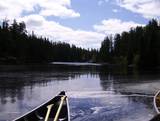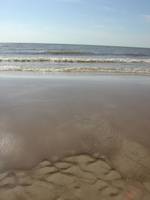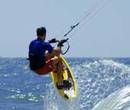Lake Winnipeg in Canada drains northward into the Nelson River at an average annual rate of 2066 m³/s, and forms part of the Hudson Bay watershed which is one of the largest in the world. This watershed area was historically known as Rupert's Land when the Hudson Bay Company formed in the late 1600s.
Lakes Winnipeg, Manitoba, and Winnipegosis are found at the floor of the prehistoric Glacial Lake Agassiz. The area between Lake Winnipeg and Lakes Winnipegosis and Manitoba is called the Interlake Region, and the whole region is called the Manitoba Lowlands.
Canada's Lake Winnipeg Beaches
Canada Lake Winnipeg's beaches are year-round destination. For some of southern Manitoba's finest cross-country ski destinations, head to Grand Beach on the eastern shore of Lake Winnipeg. The Jack Pine (2.6 kilometre), and Blueberry trails are recommended for novices. Intermediate skiers can challenge themselves on the Boulder Hill (6.1 kilometre) and Beaver Pond ((13.3 kilometre) trails, while expert skiers can tackle the rugged 2.6 kilometre "Squirrel Run." All trails begin and end at the same staging area.
The Hudson Bay Company created a trading-post on Lake Winnipeg around 1884.
The first European to have seen the lake is believed to have been Henry Kelsey in 1690. He adopted the Cree language name for the lake: w?nip?k, meaning "muddy waters". La Verendrye referred to the lake as Ouinipigon when he built the first forts in the area in the 1730s. Later, the Red River Colony to its south would take the lake's name and become Winnipeg, the capital of Manitoba.
Due to its long, narrow shape, the lake exhibits a variety of interesting wind and wave effects, including waves of up to one metre in height at its southern shore, a process called wind tide. This occurs when prevailing northerly winds blow along the length of Lake Winnipeg, exerting a horizontal stress on its surface. Surface waters move in the direction of the wind and pile up along the windward south shores. Setups greater than 1 m above normal lake levels have been recorded along many of southern Lake Winnipeg's recreational beaches, and the associated high waves with their uprush effects have caused considerable storm damage, backshore flood and shoreline erosion. The highest setups occur in the fall, when the northerly winds are strongest. If the winds die down suddenly, the waters rush northward, then slosh back and forth in a process called seiching.
Communities on the lake include Grand Beach, Riverton, Gimli, Winnipeg Beach, Victoria Beach, Pine Falls, Manigotagan, Berens River, and Grand Rapids. A number of pleasure beaches are found on the southern end of the lake.
Kiteboarding as soon as the ice is off
Kite-boarding or kite-surfing is one of the newest recreational attractions in the Beaches Area of Lake Winnipeg. It is a combination of surfing and flying your kite. This sport is perfect for Manitoba's open waters and frequent winds.
Though a few die hard kite-boarders will start right in the spring, as soon as the ice is off the lake(some might not even wait that long), summers are great with the famous Manitoba warm winds and waters.
The hard core Kiters now meet at the Sandbar, as the owner Tyler is one of the province's hard core riders, and his family has been involved in all aspects of sailing in this province for over 40 years. The Sandbar has a live weather station to let every one know where the best places to ride are. After a good hard day of riding they usually go to Tyler's house for beers & BBQ, and great fires. He also allows Kiters to camp there, at no cost.
In the eyes of Manitoba's Kiters Tyler does a lot to promote the sport of Kite Boarding and promotes and takes care of all fellow kiters. He also takes care to ensure all rules are followed to allow great growth to the Kiting sport within the Grand Beach Region.
The legendary winds of Lake Winnipeg may have struck fear into many a lake-going mariner, but to speed-loving windsurfers in the Lake's southern basin, the breezes are a blessing. Tie down your board and head to any of the Lake's southern beaches, from Gimli in the northwest to Victoria in the northeast. (Be sure to surf Grand Beach on your way 'round!) Early spring and late fall are the windiest seasons on Winnipeg, but they are also downright chilly: you will need a dry suit, a hood, boots and gloves.
Cross-Country Skiing at Grand Beach Provincial Park
Lake Winnipeg's beaches are year-round destinations. For some of southern Manitoba's finest cross-country ski destinations, head to Grand Beach on the eastern shore of Lake Winnipeg. The Jack Pine (2.6 kilometre), and Blueberry trails are recommended for novices. Intermediate skiers can challenge themselves on the Boulder Hill (6.1 kilometre) and Beaver Pond ((13.3 kilometre) trails, while expert skiers can tackle the rugged 2.6 kilometre "Squirrel Run." All trails begin and end at the same staging area.
Snowmobilers will find over 23 kilometres of trails at Grand Beach, connected to longer distance touring destinations such as Gimli, to the west, and Whiteshell Provincial Park, to the east.
Author: Fredrick Buetefuer



